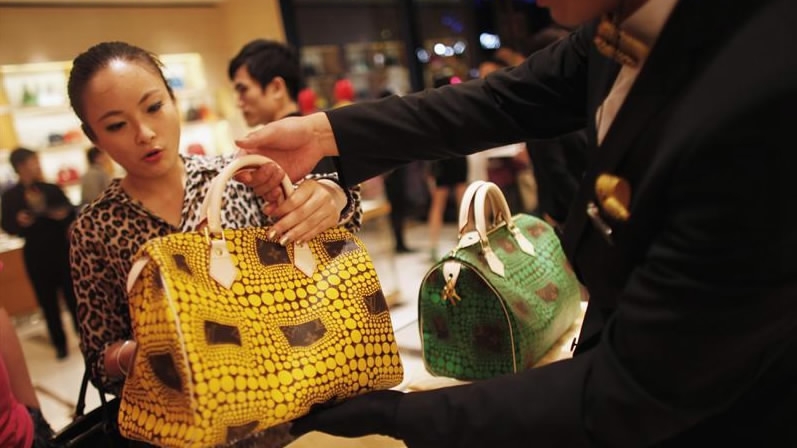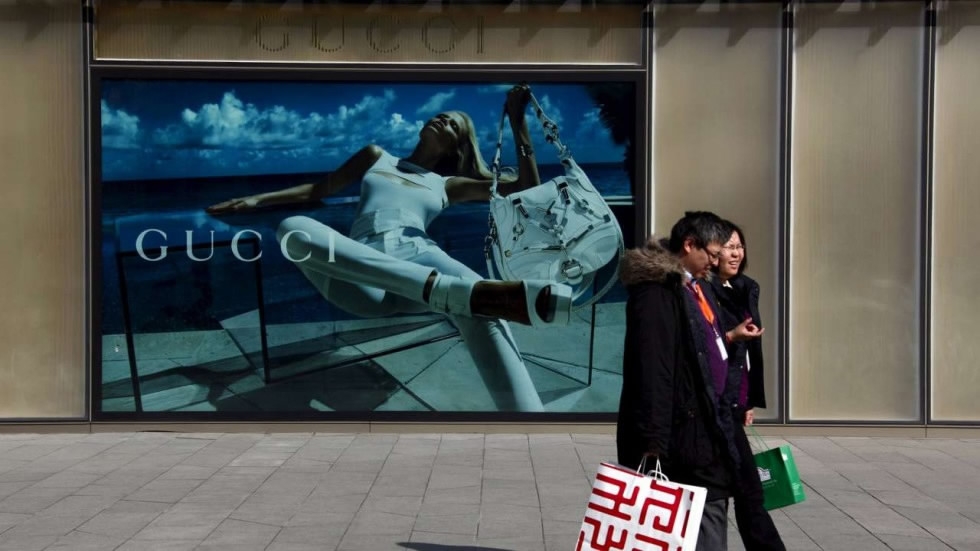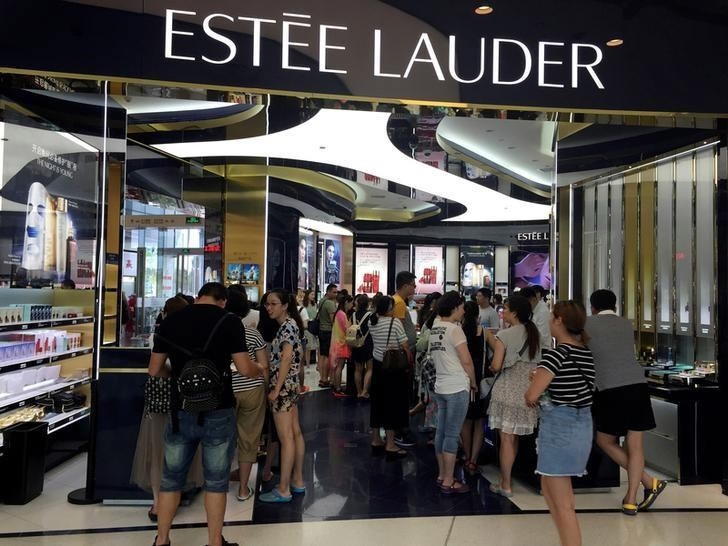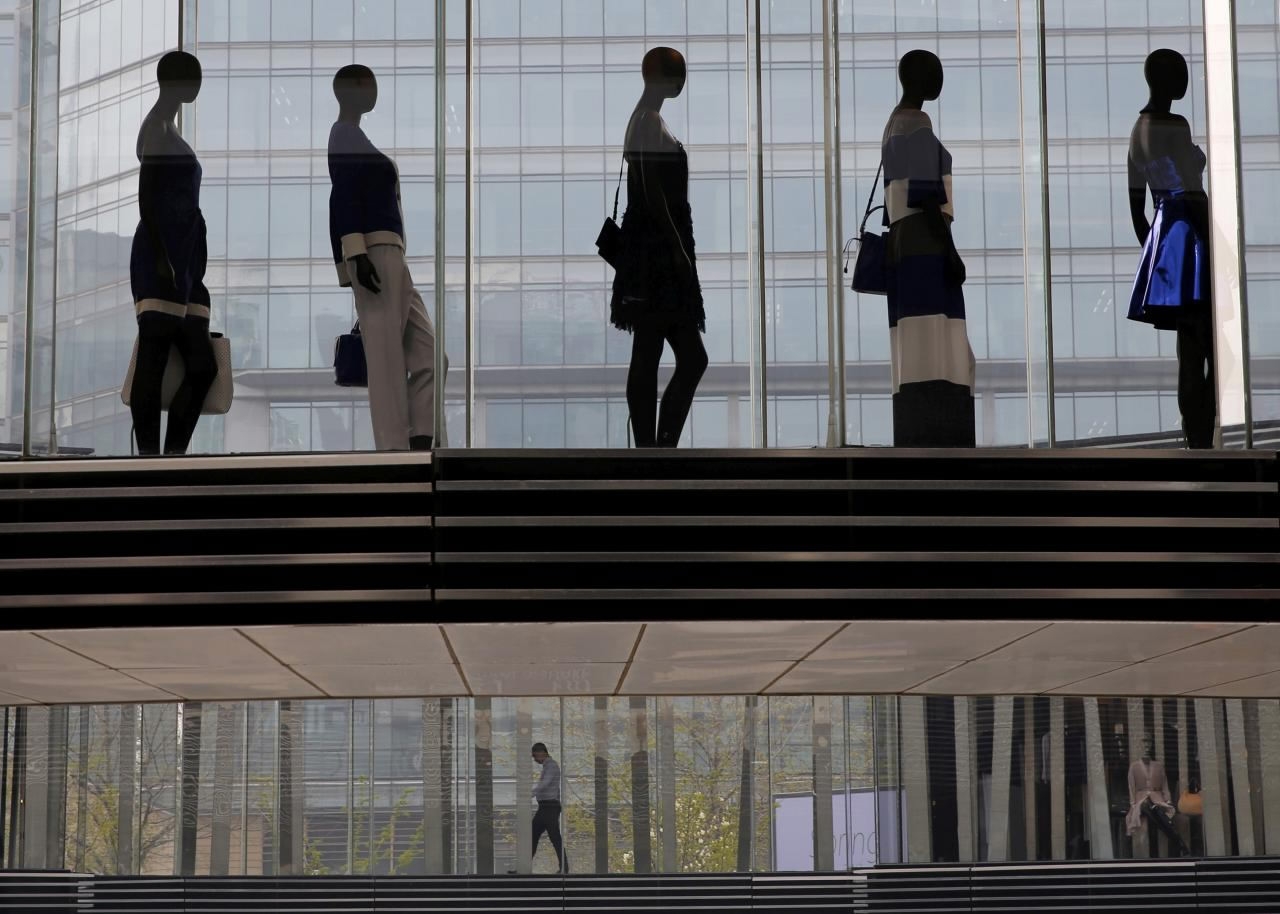
Business
18:42, 17-Jan-2018
China luxury sales rebound as millennials snap up cosmetics, handbags
CGTN

China’s luxury goods market is back in fashion.
Domestic sales of Gucci handbags to Chanel cosmetics, sluggish in China for years largely due to a government austerity campaign, rose at the fastest pace in over half a decade last year and are poised to consolidate the gains in 2018, according to consultancy Bain & Co.
As the world's high-end brands continue to target one of the largest group of extravagant shoppers, they may need to reconsider who they are aiming to lure, as millennials become a rising spending force.
Sales of luxury goods in China hit 142 billion yuan or 22.07 billion US dollars last year, up around 20 percent from the year before, said the report on Wednesday.
That’s the sharpest growth since 2011 when luxury sales started to be hit by slower economic growth and a fierce crackdown on corruption.

Reuters Photo.
Reuters Photo.
China’s shoppers are the biggest spenders worldwide on luxury products, making up 32 percent of the 262 billion euros global market last year.
“It’s essentially been a flattish market for the last five years; now 2017 is plus 20 percent, that’s an amazing rebound,” said Bruno Lannes, a Shanghai-based partner at Bain, adding lower pricing and government support were key drivers.
The sharp rise - which saw particularly strong growth for women’s clothing, jewelry, cosmetics, shoes and handbags - follows tepid growth in 2016 and dips in both 2015 and 2014.

Reuters Photo.
Reuters Photo.
Beijing has been pushing for greater domestic spending, cutting high tax rates on imported luxury goods sold in the country, with looming cross-border e-commerce regulations which threaten the livelihood of "Daigou," or overseas shopping agents.
Bain said China’s luxury market should also see robust growth this year “fueled by millennials and ready to wear” attire, though the growth rate would likely slow down to “low-mid teen” levels given the fast growth in 2017.
The revival is being driven by China’s tech-savvy millennial generation aged between 20 to 34, who generally prefer ready-to-wear and fast fashion over more traditional design, helping propel new areas like luxury casual wear and sportswear.

Reuters Photo.
Reuters Photo.
“This is a new China coming in as opposed to the old China coming back,” said Lannes.
That shift creates a challenge for more traditional brands like Prada (1913.HK), which is having to play catch up with newer rivals like Coach.
Others like Hermes (HRMS.PA), France’s LVMH and Kering are seeing revived appetite from China, helping boost their global sales last year.
Luxury spirits makers, including China’s own Kweichow Moutai and France’s Remy Cointreau, saw a pick up in China sales too.
Lannes added the fast growth would see winners and losers emerge, depending on who could crack the code of China’s youth.
“A new China is emerging with new consumers that were not there five years ago that have different profiles, different expectations and different tastes,” he said.
Source(s): Reuters

SITEMAP
Copyright © 2018 CGTN. Beijing ICP prepared NO.16065310-3
Copyright © 2018 CGTN. Beijing ICP prepared NO.16065310-3